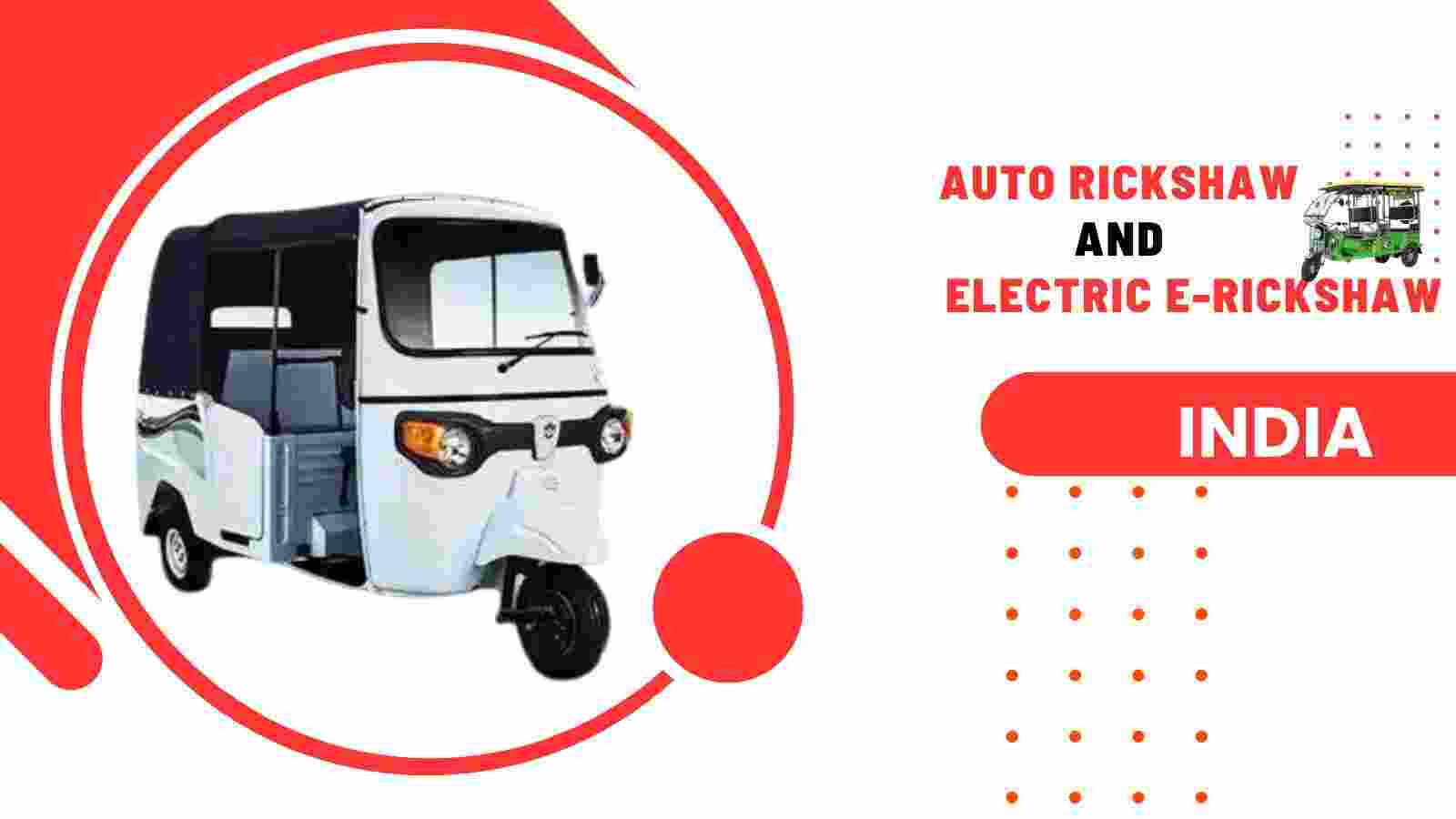


An auto rickshaw has been a part of India’s streets for decades. Perhaps you’ve taken one on a short ride through a busy market or along narrow lanes.
An auto rickshaw has been a part of India’s streets for decades. Perhaps you’ve taken one on a short ride through a busy market or along narrow lanes. However, the past years have shown a new face of this three‑wheeler: the electric e‑rickshaw. In addition to saving money on fuel, these electric autos bring environmental benefits, low maintenance, and comfort. In this blog, we will explore the journey of the auto rickshaw, the rise of electric e‑rickshaws, and why they matter today.
To begin, the term “rickshaw” was used in the late 1800s for human‑pulled carts in Shimla and Kolkata. Then around the 1940s and 1950s, motorized rickshaws emerged in India, driven by small single‑cylinder engines. India’s Bajaj Auto quickly dominated this market, and auto rickshaws became a familiar sight in every city.
Traditional auto rickshaws usually run on petrol, CNG, or diesel. They seat three to four passengers but are not ideal for long trips due to slow speed and exposure to air pollution. In many cities, they gained popularity due to their low cost and ability to maneuver through traffic.
Perhaps the most exciting change is the shift to electric e rickshaws. These small electric vehicles, often called e‑tuk‑tuks or Totos, do not use any petrol or diesel. Instead, they run on electric batteries, making them cheaper and greener than traditional rickshaws.
India now has nearly 2.4 million battery‑powered three‑wheelers, with about 11,000 new ones registered each month—a $3.1 billion industry. This shows how e‑rickshaws aren’t just trendy; they’re becoming essential.
In addition, electric e‑rickshaws run on electricity, which costs much less than petrol or diesel. Drivers save a lot each month.
Electric vehicles have fewer moving parts. In addition, drivers avoid frequent oil changes and engine checks, which lowers maintenance costs .
E‑rickshaws operate smoothly, without the noise and vibration of traditional engines. Passengers and drivers enjoy a better ride .
These compact vehicles can easily weave through traffic and narrow lanes. This makes them perfect for crowded urban areas .
E‑rickshaws produce no tailpipe emissions. They play a key role in improving air quality in cities .
The Indian government supports these vehicles through the FAME‑II scheme and state incentives. They also offer subsidies and tax breaks.
Electric e‑rickshaws do more than just transport—they help real lives. For example, drivers switch to e‑rickshaws and save on fuel, which means more money for their families.
Story of Preethi:
Preethi, a trans woman in Bengaluru, turned her life around when a charity donated her an electric rickshaw. She now earns ₹2,000 daily and enjoys respect and independence. In addition, similar programs empower other women and nonbinary people.
Although India has over 12,000 public EV charging stations, widespread access is still maturing. In addition, smooth charging means more time earning, not waiting.
Many e rickshaws use lead‑acid batteries with 6–12 months’ lifespan. We must look at recycling and second‑life use of old batteries to avoid waste.
Some homemade e‑rickshaws in Kolkata lack proper speed limiting and can be unsafe. Standard rules and safer designs are needed for all operators.
States like Telangana are supporting eco‑friendly autos by issuing 40,000 permits for electric, LPG, and CNG rickshaws. In Uttar Pradesh, e‑rickshaws make up 40% of the EV market, backed by subsidies and over 200 charging stations.
India aims for 30% of private cars and 80% of two‑ and three‑wheelers to be electric by 2030. This shift could cut CO₂ emissions by 5 million tons by 2030, and 110 million tons by 2050.
In conclusion, auto rickshaws have come a long way from human‑pulled carts. Now, electric e‑rickshaws offer cost savings, comfort, and cleaner air. In addition, they uplift drivers and communities—like Preethi—giving them dignity and a source of income.
With government support, charging networks, and better batteries, electric e‑rickshaws will be everywhere on India’s roads. Perhaps your next ride will save you money and helps our planet.
Let’s support this green revolution and appreciate the simple yet powerful electric e‑rickshaw.
See – https://crivva.com
